
views
Closing Knives without a Lock
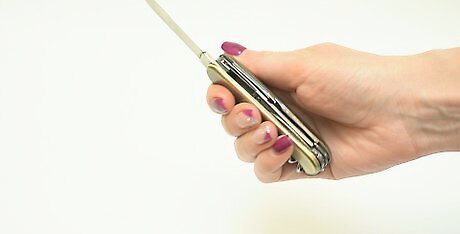
Hold the knife by the sides of the hilt. Make sure your fingers aren't over the slot where the blade of the knife will go. Use a firm grip with the base of your palm and your thumb on one side and the pads of your fingers on the other. Always point the blade away from your body. That way if your hand slips, the blade will fall away from you.

Grip the back of the blade with your dominant hand. Hold the dull side of the blade between your thumb and your fingers. Many knives have a ridge along the top of the blade to give yourself a better grip. Keep your fingers firmly help on the blade so you don't slip and cut yourself.
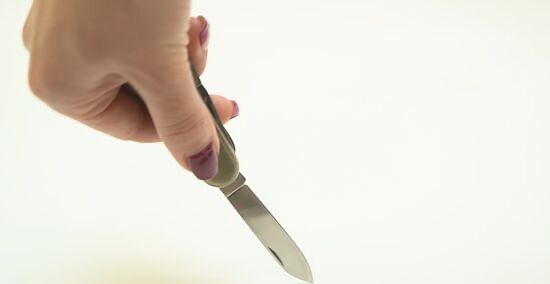
Push the knife into the slot slowly. Make sure the sharp edge of the blade is secured in the slot completely. Once the knife is closed, the blade should not open on its own. Work with 2 hands until you're comfortable opening and closing your knife. After you feel confident handling the knife, you can practice closing your knife with 1 hand. Push the back of the blade against a solid surface to close it without using your fingers.
Shutting Knives with Liner and Frame Locks
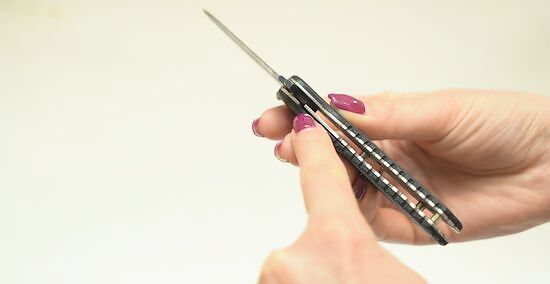
Find the part of liner or frame behind the blade on the underside of the hilt. Liner and frame locks move a portion of the outer or inner lining behind the blade to secure the knife in place. Look for a small saw-toothed portion directly behind the blade. Liner locks use a portion of the interior lining to keep the blade in place while frame locks use a portion of the knife's outer casing.
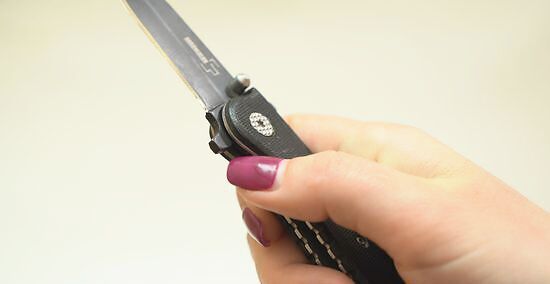
Push the liner or frame away from the blade with your thumb. Hold the blade so the sharp side faces up. Move the locking mechanism so it isn't in contact with the blade. The knife will feel like it has less tension once you release the lock. Holding the knife upside down prevents the blade from falling onto your thumb when you move the locking mechanism.
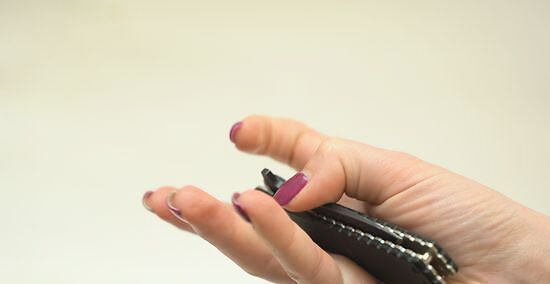
Move your thumb before you close the knife with your dominant hand. Hold the blade with your other hand as you move your thumb. Make sure the blade is fully in the slot. Frame and liner locks do not hold the blade closed, so use caution when you're carrying or handling them.
Securing a Button Lock Knife
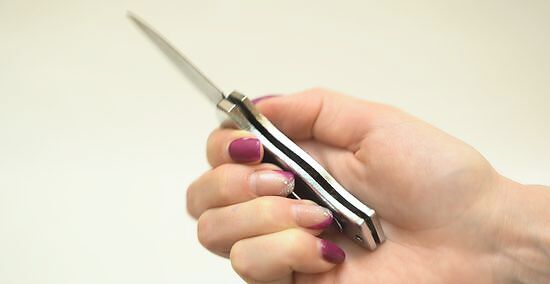
Hold the knife on the top of the hilt with your dominant hand. Make sure the bottoms of your fingers aren't wrapped around the hilt or you could cut yourself while closing it. Button lock knives can easily be operated with 1 hand, though you may want to practice closing it with 2 hands first.
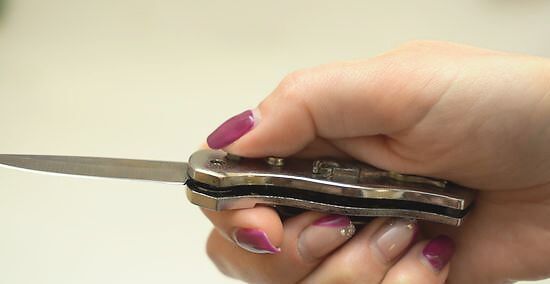
Depress the button on the hilt with your thumb. The button lock can be found on the hilt near the base of the blade. Depending on the brand and style of knife, the button may appear different, but it usually looks like a small cylinder coming out of the surface of the knife. Press down on the button to undo the lock. If you have trouble pressing the button, look at the inside of the locking mechanism to see if there's any buildup. Blow it away with your breath or use a small wire to clear the debris from the inside.

Use your non-dominant hand to push the blade closed. Once the button is pressed, the blade will feel loose and can easily be moved back into place. Make sure your fingers are away from the slot as you secure the blade. Most button locks will hold the blade tight unless it is pressed again. Check the manual for your blade to determine if the lock holds the knife in its casing.
Closing an Axis Lock Knife
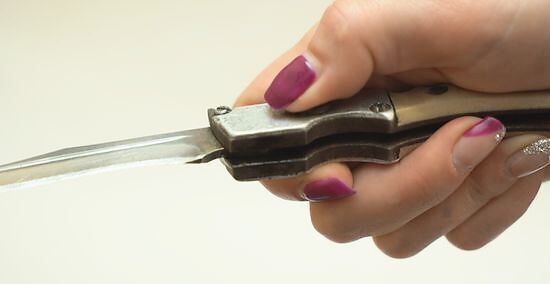
Pull the pin on the side of the hilt towards you with your thumb. The pin on the side of the knife will be connected to a U-shaped tension wire known as an omega spring. Hold the knife so it is parallel with the ground and pull the pin back to unlock the blade from its place.
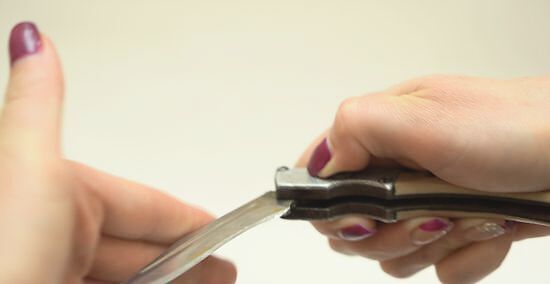
Push the blade back with your other hand. Keep the pin pulled back as you move the blade to the closed position. Make sure your fingers aren't on the bottom of the hilt or else you will get cut. Keep your fingers on the dull side of the blade while working with the knife.
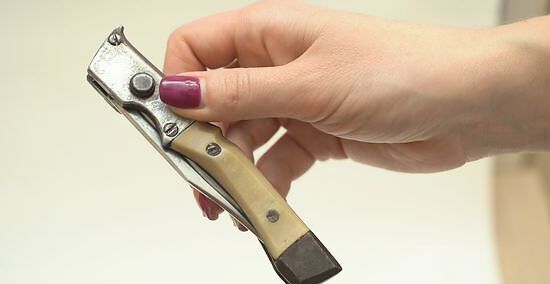
Release the pin to secure the blade. Once the blade is in the hilt, let go of the pin to put tension back on the knife. The axis lock holds the blade safely open or closed unless it is pulled back again. You can pull the knife open by the blade, but the tension from the omega springs will make it more difficult.




















Comments
0 comment